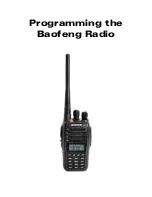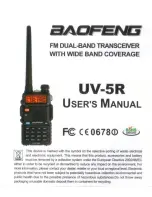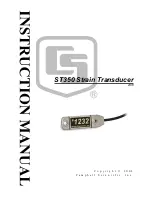
36
7
STORING ODD-SPLIT REPEATER FREQUENCIES
Some repeaters use a receive and transmit frequency
pair with a non-standard offset. If you store two separate
frequencies in a memory channel, you can operate on
those repeaters without programming the offset
frequency and direction.
1 Select the desired receive frequency and related data
by using steps 1 to 4 given for simplex or standard
repeater frequencies.
2 Press [F].
3 Turn the Tuning control, or press Mic [UP]/ [DWN], to
select the desired memory channel.
4 Press [M.IN] (1 s).
•
“
±
” appears.
5 Select the desired transmit frequency.
6 Press [M.IN].
Note:
◆
When you recall an odd-split memory channel, “
±
” appears on the
display. To confirm the transmit frequency, press [REV].
◆
Transmit Offset status and Reverse status are not stored in an odd-
split memory channel.
STORING SIMPLEX FREQUENCIES OR STANDARD
REPEATER FREQUENCIES
1 Select the desired band.
2 Press [VFO].
3 Select the desired frequency.
4 If storing a standard repeater frequency, select the
following data:
•
Offset direction {page 29}
•
Tone ON, if necessary {page 30}
•
Tone frequency, if necessary {page 30}
If storing a simplex frequency, you may select other
related data (CTCSS ON, CTCSS freq., etc.).
5 Press [F].
•
A memory channel number appears and blinks.
•
“ ” indicates the current channel is empty while “ ”
indicates the channel contains data.
6 Turn the Tuning control, or press Mic [UP]/ [DWN], to
select the desired memory channel.
7 Press [M.IN].
Summary of Contents for TM-D700 E
Page 99: ......
















































